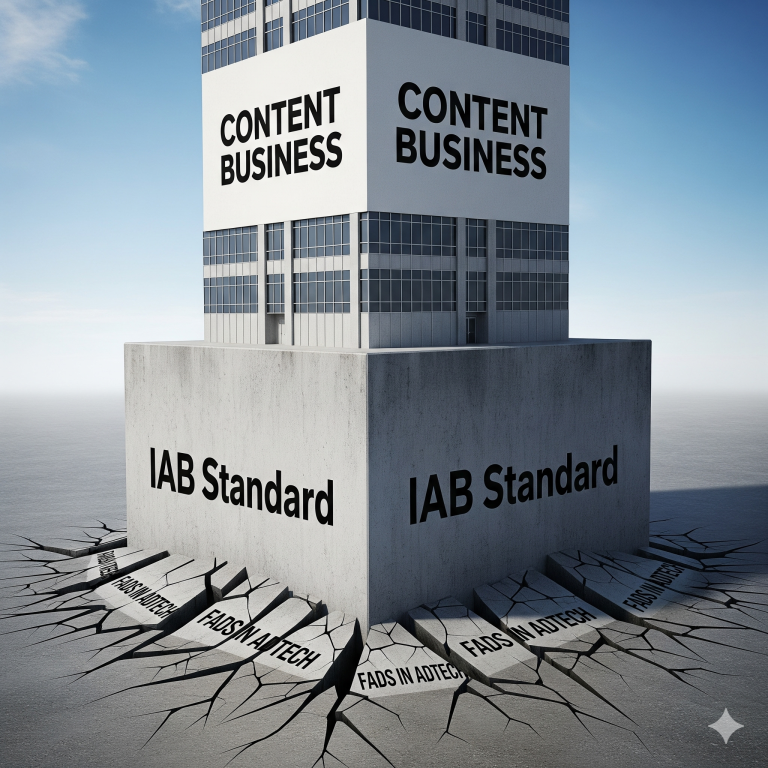CLS Crisis: How Google’s Helpful Content Update Devastated Ad-Driven Sites in October 2023
Discover the devastating impact of Google’s Helpful Content update on ad-driven websites suffering from Cumulative …
Ad Layout AdTech Google Ad Manager Helpful Content Update Optimizing Revenue SEO

August 25th, 2025
Discover the devastating impact of Google’s Helpful Content update on ad-driven websites suffering from Cumulative Layout Shift (CLS).
Understanding the Google Helpful Content Update
The Google Helpful Content update, launched in October 2023, was aimed at improving user experience by prioritizing websites that provide helpful and relevant content. This update introduced several changes to the search algorithm, affecting how websites are ranked in search results.
The main goal of the Google Helpful Content update was to ensure that users are presented with high-quality and useful information when they search for a particular query. This meant that websites with helpful content would be favored over those that did not provide valuable information to users.
The update took into consideration various factors, including page loading speed, mobile-friendliness, and content relevance. One significant aspect that was considered was Cumulative Layout Shift (CLS), which measures the visual stability of a web page as it loads.
Overall, the Google Helpful Content update aimed to enhance user experience by promoting websites that offer valuable and reliable content.
The Significance of Cumulative Layout Shift (CLS)
Cumulative Layout Shift (CLS) refers to the unexpected shifting of web page elements as it loads, causing a poor user experience. This can happen when ads or other dynamic elements on a page cause the content to shift, leading to frustration and confusion for the user.
CLS is measured based on the amount of layout shift that occurs on a web page. A higher CLS score indicates more significant shifts and a poorer user experience. Google considers CLS as an important factor in determining the quality and usability of a website.
With the Google Helpful Content update, websites with high CLS scores were negatively impacted. This means that websites with excessive layout shifts caused by advertising were at a disadvantage in terms of ranking in search results.
Understanding the significance of CLS is crucial for website owners and developers to ensure a smooth and stable user experience.
The Interplay Between Advertising and CLS
Advertising plays a significant role in generating revenue for many websites. However, it can also contribute to Cumulative Layout Shift (CLS) if not implemented correctly.
When ads are not properly optimized, they can cause layout shifts on a web page, leading to a poor user experience. This can occur when ads load after the main content, causing the page to shift suddenly.
To mitigate the impact of advertising on CLS, website owners and developers should prioritize proper ad placement and optimization. This includes considering factors such as ad loading time, ad formats, and the overall design of the web page.
By ensuring that ads are integrated seamlessly without causing layout shifts, website owners can provide a better user experience while still generating revenue through advertising.
The Unfortunate Consequences of the Update
Unfortunately, the Google Helpful Content update had unintended consequences for ad-driven websites suffering from Cumulative Layout Shift (CLS).
Websites that heavily relied on advertising as a source of revenue were hit hard by the update. The decrease in their search rankings resulted in a significant loss of traffic and potential revenue. Put simply, if you lose half your traffic, you lose at least half of your revenue.
This sudden drop in visibility and organic traffic had a detrimental impact on the sustainability of ad-driven websites. Many struggled to recover or find alternative monetization strategies to compensate for the loss.
The update highlighted the importance of adjusting your Advertising Layout and ensuring that it fits within the Parameters that Google Sets. Remember, Google makes most of its revenue from Advertising so the idea that they are trying to force you to diversify is nonsense.
Mitigating the Effects of CLS on Ad-Driven Sites
For ad-driven websites affected by Cumulative Layout Shift (CLS), there are several steps that can be taken to mitigate the negative effects:
1. Optimize ad placements: Ensure that ads are strategically placed on the web page to minimize layout shifts. Consider factors such as ad loading time and the impact on user experience.
2. Monitor CLS scores: Regularly monitor and analyze the CLS scores of web pages. Identify problematic areas and take necessary actions to optimize layout stability.
3. Improve ad loading speed: Slow-loading ads can contribute to layout shifts. Optimize ad loading to minimize delays and improve overall page performance.
4. Test across devices: CLS can vary across different devices and screen sizes. Test websites on various devices to ensure consistent and stable layouts. Google provides PageSpeed Insights to allow you to do just that.
5. Get to know the Google Search Console. Remember, Google wants you to succeed at your ad business. The Search console will give you direct access to fix every issue you have.
By implementing these strategies, ad-driven websites can minimize the negative impact of CLS and provide a better user experience for their visitors. Advally specializes in fixing sites that were harmed by the Helpful Content Update, and using our process of Holistic Revenue Optimization to ensure that big hits to traffic like this never happen to you.
Related Blogs

What “IAB Standard Banners” Look Like on a Modern Website
August 27th, 2025 by Doug Bishop
In the evolving landscape of digital publishing, display advertising remains a vital revenue stream. However, the way ads are presented and filled has transformed over the past decade. It is essential for publishers to grasp the significance of iab standard banners, recognize their presence on websites, and understand their impact on monthly earnings. The Basics: […]
Read More
Google Search Console Tutorial: Checking for CWV Errors
August 26th, 2025 by Doug Bishop
As a website owner, keeping an eye on your site’s performance is crucial for both user experience and search engine optimization (SEO). Google’s Core Web Vitals (CWV) are an important set of metrics that measure real-world user experience for loading performance, interactivity, and visual stability. CWV errors can negatively impact your search rankings, so it’s […]
Read More
How Core Web Vitals Became Central to Search Rankings
August 25th, 2025 by Doug Bishop
Google’s Helpful Content Update in 2023 first exposed a painful truth for publishers: visitor experience metrics are now revenue metrics. In 2025, that reality has hardened. Core Web Vitals — Cumulative Layout Shift (CLS), Interaction to Next Paint (INP), and Largest Contentful Paint (LCP) — have become the silent killers of search visibility, draining traffic […]
Read More